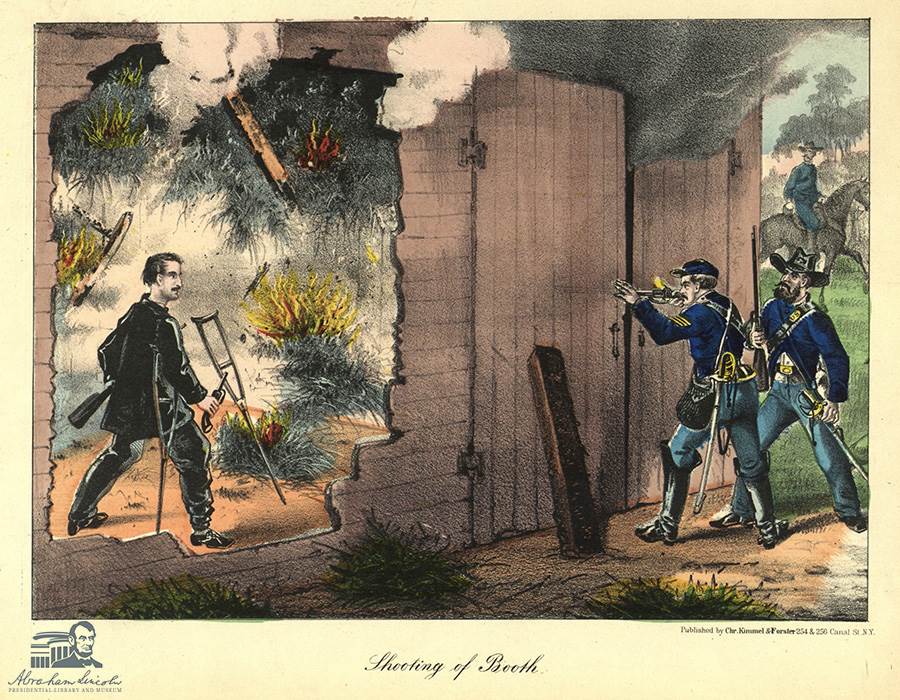It’s just an old piece of cloth with a faded brown stain – hardly the kind of thing you’d expect to see displayed in the heart of the Abraham Lincoln Presidential Library and Museum. But this cloth comes from the night Abraham Lincoln was shot. The stain is his blood.
The cloth was cut from the dress of Laura Keene, the lead actress in the play Lincoln was watching when John Wilkes Booth shot him 157 years ago this month. After the shooting, she made her way to the presidential box and held Lincoln’s head in her lap.
 A fragment of Laura Keen's blood-stained dress and a photograph of her on display. (ALPLM)
A fragment of Laura Keen's blood-stained dress and a photograph of her on display. (ALPLM)
The story of Lincoln’s assassination and its aftermath is legendary. Less familiar are the details of what happened to Booth after he fired the fatal shot.
After jumping out of the presidential box and breaking his left leg, Booth left the building and rode into the night on a waiting horse. He was soon stopped by a sentry at a bridge over the Anacostia River, which civilians were not supposed to cross at night. But word of the shooting had not spread yet, and the sentry decided to make an exception and let Booth go on. About the same time, the dying president was carried out of Ford’s Theatre to a small room across the street.
Booth met with an accomplice named David Herold soon after and the duo travelled nine miles to the Surratt Tavern, where they arrived at about midnight and retrieved weapons. Attempting to evade capture and distance themselves from the site of the murder, they continued into the night.
Meanwhile, one of the greatest manhunts in American history was getting underway. Thousands of soldiers began searching for the killer. The War Department soon promised a $100,000 reward.
 The wanted poster (ALPLM)
The wanted poster (ALPLM)
Booth needed treatment for his leg and stopped at the house of Dr. Samuel Mudd, where he stayed the day before traveling further into southern Maryland, an area with few homes, telegraphs or railroads.
As Lincoln’s body began the slow journey back to Springfield, Booth and Herold were hiding in the woods and reading news accounts provided by a Confederate agent. To Booth’s surprise, they portrayed him as a villain instead of a hero.
Nine days after shooting Lincoln, Booth and Herold managed to slip into Virginia, where more Confederate sympathizers gave them shelter for several days. But federal troops were on their trail and tracked the fugitives to a farm owned by Richard H. Garrett.
Before dawn on April 26, troops surrounded the barn where Booth and Herold were hiding. Herold surrendered. Booth did not. The soldiers set the barn on fire, hoping it would drive Booth out. In the pandemonium, a soldier named Boston Corbett fired into the barn and hit Booth in the neck, mortally wounding him. Corbett would later claim Booth had raised his carbine to shoot at the troops.
 An artist's depiction of Booth in the burning barn, just before being shot. (ALPLM)
An artist's depiction of Booth in the burning barn, just before being shot. (ALPLM)
After being dragged out of the barn, Booth stared at his bloody hands and uttered “useless, useless.” He died at sunrise. Three hundred sixty miles to the north, Lincoln lay in state in Albany, New York.
Twelve days after it started, the manhunt for Lincoln’s assassin ended with blood.